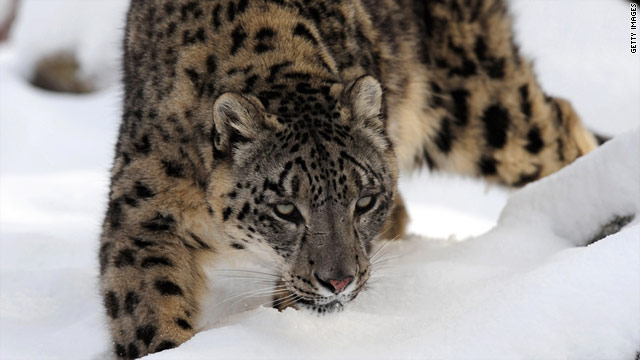In the rugged snow-capped mountains of Afghanistan, a magnificent and elusive creature roams the peaks of the mountains, The Snow Leopard, an apex predator that lives in the high snow-capped peaks of Afghanistan is facing an array of threats to its existence due to human pressures and poaching and hunting, Snow leopards in Afghanistan are poached for its fur and hunted recreationally, also the loss of habitat due to human pressures such as agriculture is decreasing the prey density in the region where Snow Leopards live, hence, the Snow Leopards are being forced to move closer to human settlements to prey on cattle species which puts them in direct conflict with humans. The threats faced by Snow Leopards are more or less the same in almost every country but in Afghanistan, the additional threat they face is war, the war on terror campaign by the United States relentless bombing of the mountain peaks to drive out the insurgents of the Mountain caves as caused the Snow Leopards to either move to higher altitudes or to the foothills, the war has forced the Snow Leopards to migrate to safer areas, often out of the protected areas. Afghanistan has been at war since its inception and hence the country has not focused on creating many National parks or other protected areas.
Snow leopard in the Wakhan Corridor caught on camera trap. Photo by: Wildlife Conservation Society.
Habitat loss
Snow Leopards inhabit the high mountains of the Hindu Kush and the Pamir ranges in Afghanistan, these alpine habitats are remote and pristine untouched by humans which provides the perfect habitat for the Snow Leopards, habitat loss is the biggest threat to the Snow leopard which makes them more vulnerable as they venture more into human settlements they are at risk of being poached and supplied for the illegal trade in border areas of China.
Overgrazing, mining, and unsustainable rapid infrastructure developments are fragmenting the Snow Leopard habitats which makes it difficult for the Snow Leopard to find an abundance of ungulate-based prey hence forcing it to seek out other alternate options.
Poaching
Poaching is an evergreen problem though not very common as Snow Leopards are incredibly hard to find, it is not worth the effort to poach a single Snow Leopard but that does not mean that they are not prized in fact their fur is luxury item used in making fur coats sold by high-end luxury brands, their bones, and other body parts are used as Tiger body parts are used, during periods of conflicts and instability the Snow Leopard has been persecuted more often than during times of relative peace as conflict begets poor economic condition which begets poverty hence it becomes a question of survival for the poacher. Apart from targeted hunting Snow Leopards get caught in snares and traps set by humans with livestock to protect their livestock from other predators.
Human-Wildlife Conflict
Retaliation killings are the biggest cause of the population decline of Snow Leopards as their Habitat becomes more and more fragmented, and their prey base declines the Snow Leopards are forced to move to the foothills and prey upon the livestock which is most often the only source of livelihood for the people living out there hence they kill the Snow Leopard in retaliation, this approach is often detrimental to the Snow Leopard and humans as well, Snow Leopards are an important keystone species for the ecosystem and without the Snow Leopard, the Ecosystem will collapse making it unbearable for humans to live.
Conservation Efforts
Despite the relentless persecution of the Snow Leopard across all the range countries conservation efforts are taking place to save this magnificent species of the mountains, The Global Snow Leopard and Ecosystem Program (GSLEP) is a collaborative effort to protect the Snow Leopards from imminent extinction, they are implementing a range of initiatives such as anti-poaching patrols, educational awareness programs, community awareness programs, community-based conservation initiatives, etc. The Wildlife Conservation Society (WCS) is working with the local community to help preserve the species from poaching and Human-wildlife conflict.
The future of Snow Leopards in Afghanistan remains uncertain as the country is still not stable enough to economically support the Snow Leopards, and terrorist groups are increasingly looking to fund their activities through the illegal wildlife trade (IWT), despite all the obvious hurdles and challenges a few group of individuals and organizations are dedicated to saving the Snow Leopards.
